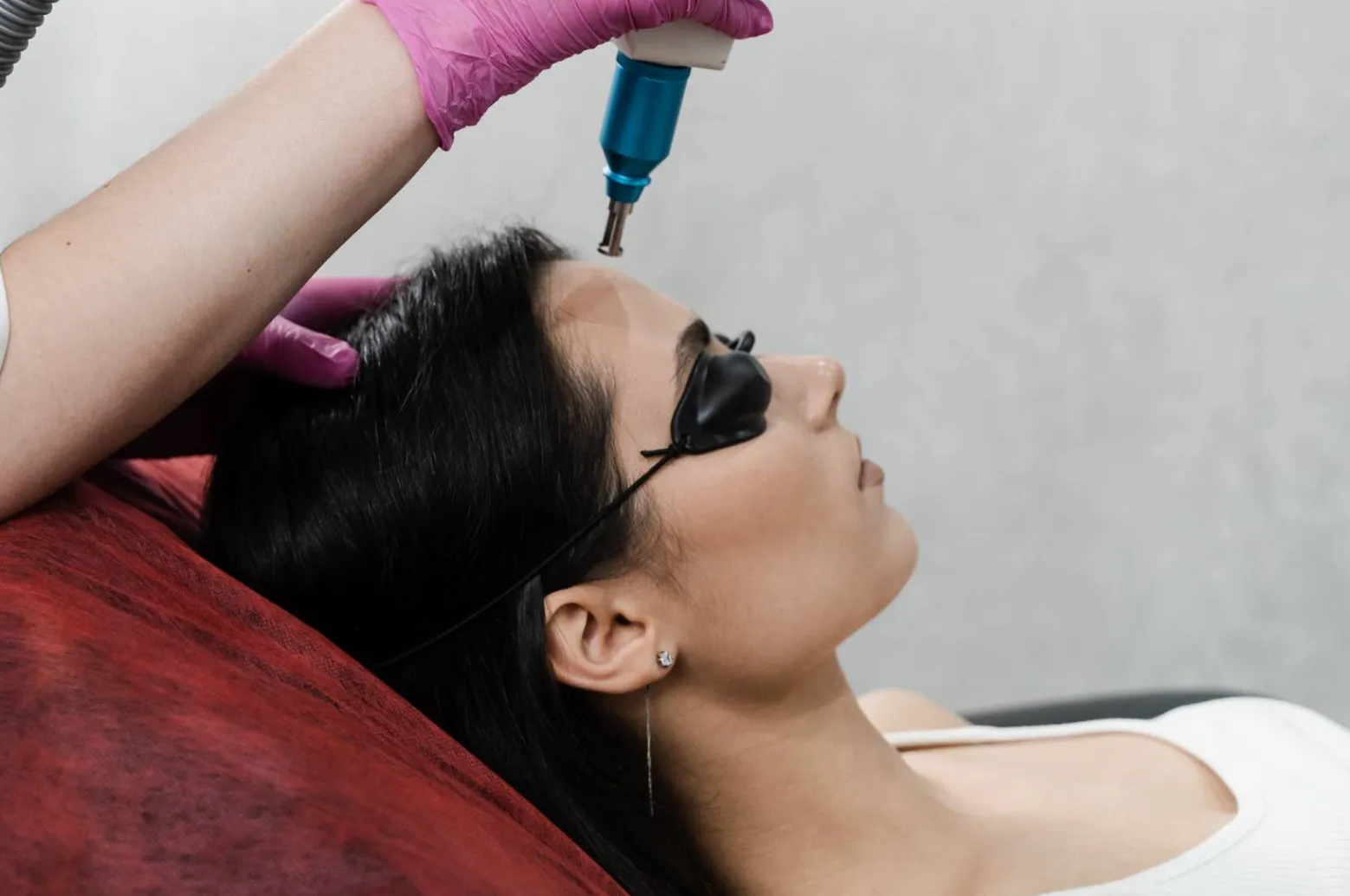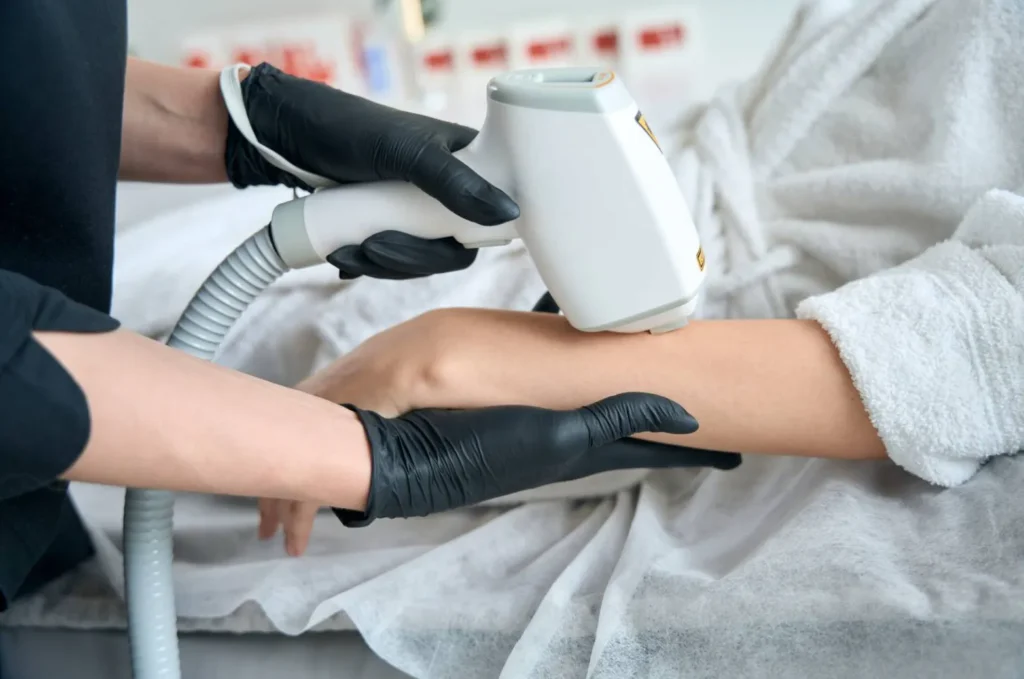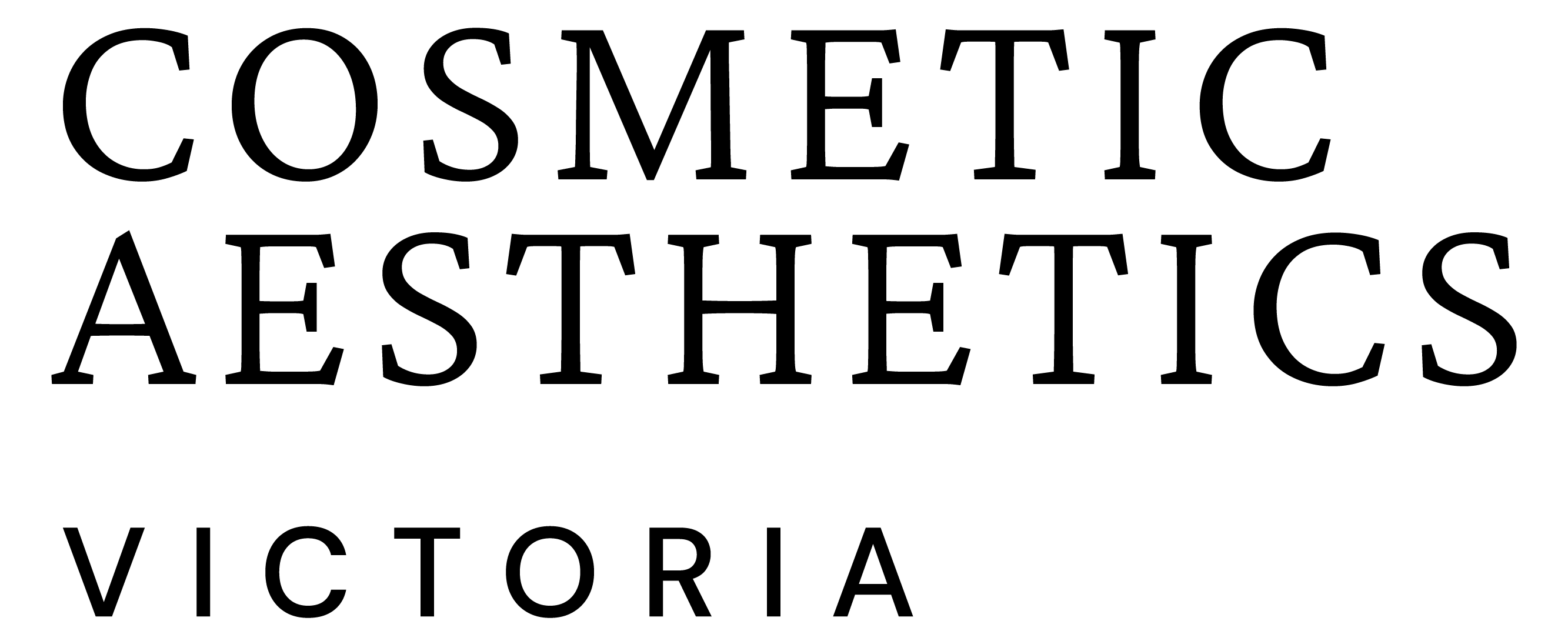
What To Do If Laser Hair Removal Doesn’t Work?
If you’ve recently undergone laser hair removal but aren’t seeing the results you were hoping for, you’re not alone. As a practitioner who’s worked with countless clients over the years, I understand how frustrating it can be to invest in something that doesn’t deliver as expected. But don’t worry—there are several reasons why laser hair removal might not be working, and just as many ways to fix it.
Let’s walk through the next steps you can take to ensure you get the smooth, hair-free skin you’ve been dreaming of.
Common Reasons Laser Hair Removal Fails And How To Fix Them
Hair Type And Skin Tone Impacting Results
Having worked in the beauty and aesthetics industry for over 20 years, I’ve encountered my fair share of frustrated clients who were hoping for permanent hair removal but didn’t get the results they were expecting. In many cases, the culprit was their hair type or skin tone—two factors that play a pivotal role in how successful laser hair removal can be.
When I first started offering laser hair removal, one of my clients, a woman with fine blonde hair, came in for a treatment and was hopeful it would work wonders for her. But after multiple sessions, she noticed little to no reduction in hair growth. The reason? Laser hair removal works by targeting the melanin (pigment) in the hair follicle, and dark, coarse hair absorbs the light much better than lighter or finer hair. Unfortunately, blonde, grey, red, or very fine hair doesn’t have enough pigment to make the treatment as effective. It was a tough conversation, but we had to explore other options for her.
For those with light or fine hair, it can be disheartening to realise that laser treatments may not give the desired results. However, recent advancements in technology, such as Nd:YAG lasers, have improved effectiveness for darker skin tones and can also help target lighter hairs.
But let me give you a local example. A client of mine, Chloe, came to see me last year. She had dark hair and fair skin, the ideal combination for LHR. After just a few sessions, she noticed a remarkable reduction in hair growth, which was exactly what we expected. It just goes to show that when your hair and skin types align with the laser’s technology, the results are often nothing short of amazing.
Incorrect Treatment Settings Or Equipment
In my experience, one of the biggest factors that affect the success of laser hair removal is incorrect treatment settings. Now, this isn’t the fault of the client—it’s often down to the technician’s skill, experience, and the equipment used.
I had one client who was getting treatments at a different clinic before coming to me. Despite attending numerous sessions, her hair was still growing back thick and fast. After examining her case, I realised the settings used on the laser were far too low for her thick hair. It’s vital that the laser’s intensity, pulse duration, and wavelength are adjusted according to the patient’s hair and skin type. If these aren’t tailored correctly, it can mean less effective results.
I recall a similar situation with a client named Sarah, who had previously gone to a clinic with equipment that wasn’t suited to her skin tone. After switching to our more advanced system, with personalised settings for her skin and hair, she started seeing amazing results after just a few sessions.
What you need to understand is that not all laser machines are created equal. Some clinics might still use outdated IPL devices, which are not as precise as true lasers. It’s important to make sure the clinic you’re visiting is using appropriate, updated technology that matches your skin and hair profile.
Treatment Timing And Hair Growth Cycle
Here’s another thing I’ve learned through years of working with clients—timing is everything. Laser hair removal is most effective during the active growth phase (anagen) of the hair cycle, but not all of your hair follicles are in that phase at the same time. This means that multiple treatments are required to ensure that each hair follicle is targeted at the right time.
Take the case of a client, Emily, who came to me after several unsuccessful sessions at another clinic. She had been scheduled for sessions every two weeks, which was too frequent. As a result, her hair follicles hadn’t had enough time to transition into the anagen phase, and the laser couldn’t work its magic on all her hair.
When Emily switched to my clinic, I adjusted her sessions to every 6 to 8 weeks, allowing time for her hair to grow and enter the active phase. After five sessions, her results were noticeable: the hair thinned, and regrowth became slower.
Patience is key when it comes to laser hair removal. It’s not an instant fix, but with proper timing and a customised treatment plan, the results will come.

Key Factors That Impact Laser Hair Removal Effectiveness
Laser hair removal’s effectiveness can depend on several factors that go beyond the technology itself. Understanding why it’s not working in your case can help you get the best outcome.
Hair Colour And Type
This one is crucial. Laser hair removal targets the melanin in your hair follicles, so the darker the hair, the better it will absorb the laser’s energy. I’ve worked with many clients whose hair is on the lighter side – think blonde or red – and unfortunately, these hair colours just don’t respond well to laser treatment. It’s even less effective for grey or white hair, as these follicles lack the pigment needed to absorb the light.
When you have darker, coarser hair, laser hair removal works like a charm. I recall one client who had thick, dark leg hair that practically disappeared after just a few sessions. That’s a perfect example of the technology working as designed.
Skin Tone
If you have fair skin and dark hair, you’re in a sweet spot, as the laser will have great contrast between your skin and hair. However, darker skin tones pose a challenge for traditional lasers, which might target the skin instead of the hair follicle. In these cases, advanced lasers like the Nd:YAG are your best bet, as they penetrate deeper and bypass the surface melanin in the skin.
I’ve personally seen how using the right technology for skin tone can make all the difference. For clients with darker skin, switching to an Nd:YAG laser improved results dramatically and reduced the risk of burns.
Hormonal Imbalances
One of the most common reasons laser hair removal fails is hormonal imbalance. Conditions like Polycystic Ovary Syndrome (PCOS) cause excessive hair growth, and sometimes, no matter how many treatments you undergo, the hair keeps coming back. I had a client who struggled with stubborn facial hair despite several treatments, and after addressing her PCOS, we saw significant improvements. It was clear that treating the root cause, not just the symptom, was key.
What To Do When Laser Hair Removal Fails?
If you’ve gone through a few sessions and feel like laser hair removal just isn’t cutting it, don’t worry—there are ways forward. Here’s what you can do:
Step 1: Consult A Dermatologist Or Laser Specialist
The first and most important step is to have an honest conversation with your practitioner. If you’ve been seeing minimal results or your hair is growing back just as thick, it’s time to reassess. A dermatologist or an experienced laser specialist can give you a professional opinion about what might be going wrong.
I’ve had clients who were concerned their treatments weren’t working, only to find that the settings on their laser weren’t right for their hair type or skin tone. A good specialist will re-evaluate your skin and hair profile and offer advice on how to improve your outcomes, including switching to a more appropriate type of laser or adjusting the intensity of the sessions.
It’s also important to consult with someone who has experience with a variety of technologies and treatments. Not all practitioners are created equal, and their skills can make a significant difference. I’ve seen treatments that floundered due to a lack of experience, which were then turned around by a more experienced technician adjusting settings or switching technologies.
Step 2: Evaluate And Adjust Treatment Settings
Sometimes, the problem isn’t with the treatment itself but how it’s being applied. If you’re not seeing results, your technician might need to adjust the settings, including the laser intensity, pulse duration, spot size, or wavelength.
For example, if your hair is finer or lighter, the laser might need to be set at a higher intensity to make it more effective. Conversely, for darker skin tones, the settings may need to be adjusted to prevent burning or irritation.
If you’ve gone through 6-8 sessions with no improvement, I’d recommend sitting down with your technician and having them recheck the settings. This is particularly important if the practitioner has been using a generic approach for all clients rather than customising the treatment to suit their skin and hair type. I’ve had clients who didn’t see the desired results until the settings were fine-tuned to their unique needs, which made a world of difference.
Step 3: Address Medical And Hormonal Conditions
If you’ve addressed the treatment side of things and results are still lacking, it may be time to look at underlying medical issues. Conditions such as PCOS, hormonal imbalances, or even medications can interfere with the effectiveness of laser hair removal.
If you suspect hormones are behind your hair regrowth, it’s a good idea to have a consultation with an endocrinologist or a dermatologist. For example, many of my clients who experience excessive hair growth due to PCOS find that, alongside laser treatments, they also need medical treatment to manage the underlying hormonal imbalances. This holistic approach can significantly boost the effectiveness of laser treatments.
Additionally, reviewing your current medications with your doctor is essential. Certain medications or even some herbal supplements can increase skin sensitivity to light or contribute to hair regrowth.
Exploring Alternatives To Laser Hair Removal
If, after multiple sessions, you find that laser hair removal just isn’t working for you, there are plenty of alternative hair removal options worth considering.
| Method | Best For | Effectiveness | Pros | Cons |
| Electrolysis | Light, grey, or fine hair; all skin tones | Permanent | Works on all hair/skin types, FDA-approved permanent solution | Slower process; time-consuming for large areas; some discomfort |
| IPL (Intense Pulsed Light) | Light skin with dark hair | Moderate to Long-Term | At-home options available; less costly than lasers | Less effective than lasers; not ideal for light or coarse hair |
| Shaving | All hair types; quick fix | Temporary | Painless, fast, inexpensive | Regrowth within days; risk of irritation |
| Waxing | Medium to coarse hair; body & facial areas | Semi-Long-Term | Smooth skin for 3–6 weeks; exfoliating effect | Painful, risk of ingrown hairs, not permanent |
| Threading | Small, precise areas (e.g., eyebrows, upper lip) | Temporary | Precise, chemical-free | Time-consuming; can be painful |
| Depilatory Creams | Fine to medium hair | Temporary | Painless, fast | Can irritate sensitive skin; often ineffective on coarse hair |

Improving Your Laser Hair Removal Results
If you’ve already tried laser hair removal and it’s not quite delivering the results you expected, it’s not time to give up just yet. By adjusting a few factors and ensuring you’re following best practices, you can potentially boost the effectiveness of your treatments.
Importance Of Consistent Pre- And Post-Treatment Care
Laser hair removal isn’t just about the treatment itself—pre-treatment and post-treatment care can make all the difference in how effective the results are. Proper preparation and aftercare are often the missing pieces for many clients.
- Pre-Treatment Care:
One key factor that can impact your results is avoiding waxing or plucking for at least four to six weeks before your treatment. This is because the laser targets the hair root, and methods like waxing and plucking remove the root, which means the laser can’t effectively target the hair.
Another essential tip: Shave the area 12-24 hours before your session. This allows the laser to focus on the follicle under the skin, reducing the risk of burns from hair on the surface of the skin. I’ve found that clients who follow these guidelines see much better results compared to those who don’t prepare correctly.
- Post-Treatment Care:
After your session, the treatment area will be more sensitive, and you’ll need to take extra precautions. Apply sunscreen regularly, especially in the weeks following your treatment. The treated area is more sensitive to UV rays, which increases the risk of irritation, pigmentation changes, or even burns. Avoid tanning beds, direct sunlight, and self-tanning products until your skin has fully recovered from treatment. You’d be surprised at how often people neglect this, thinking that the results will stay the same no matter what. But taking this step seriously can really enhance your results.
In my experience, clients who follow post-treatment instructions carefully—like avoiding excessive heat and protecting the skin from UV exposure—tend to see more satisfying results over time.
Realistic Expectations And Patience: What You Should Know?
Laser Hair Removal Is Not Instant
One of the most important lessons I’ve learned over the years is that laser hair removal isn’t an instant fix. A common misconception is that hair will disappear immediately after treatment, but the reality is that the results are gradual. After a session, you’ll likely see some shedding of hair within a few weeks, but this is just the beginning of the process.
For example, let’s take the experience of a client named Naomi. Naomi was excited about her laser hair removal treatment, but after her first session, she didn’t see the dramatic results she expected. We had a chat, and I explained that laser hair removal works gradually, targeting hair in its active growth phase and encouraging hair follicles to stop producing hair. She left the clinic with a better understanding, and after a few weeks, she started noticing fewer and finer hairs in the treated areas.
Remember, hair removal is a journey, not a sprint. Multiple sessions are needed to address different hair follicles as they enter the anagen (growth) phase. For the best results, 6-12 sessions are typically required, with each session spaced a few weeks apart. And yes, patience is key.
Setting Realistic Expectations For Hair Reduction
When it comes to laser hair removal, it’s important to keep in mind that it’s permanent hair reduction, not complete removal. I often tell my clients to think of it this way: laser hair removal can significantly reduce hair density and thickness, but some regrowth is possible. After all, no method is entirely foolproof.
One of my clients, Anna, was ecstatic after her first few sessions—the results were better than she ever expected. However, after a few months, she noticed mild regrowth. I explained to her that some hair may continue to grow back, though it will be finer and lighter. Anna came to understand that laser hair removal is a long-term solution, but periodic touch-ups or maintenance treatments may be necessary, especially in areas where hair is hormonally sensitive, such as the face or underarms.
This is why it’s important to set realistic expectations. Even after your sessions are complete, you may still need the occasional maintenance session—perhaps once a year, depending on your body’s response to the treatment.
Laser hair removal can be incredibly effective, but it’s not always a one-size-fits-all solution. From skin tone to hair type and medications, there are several factors that can impact the success of your treatments. If you’re not seeing the results you hoped for, there are steps you can take, from adjusting your treatment plan to exploring alternative hair removal methods like electrolysis.
As with any treatment, communication is key—don’t hesitate to speak up and ask your practitioner for a second opinion or to discuss alternative solutions. And most importantly, be patient. It’s a process, but with the right approach, you’ll be well on your way to achieving smoother, hair-free skin.

